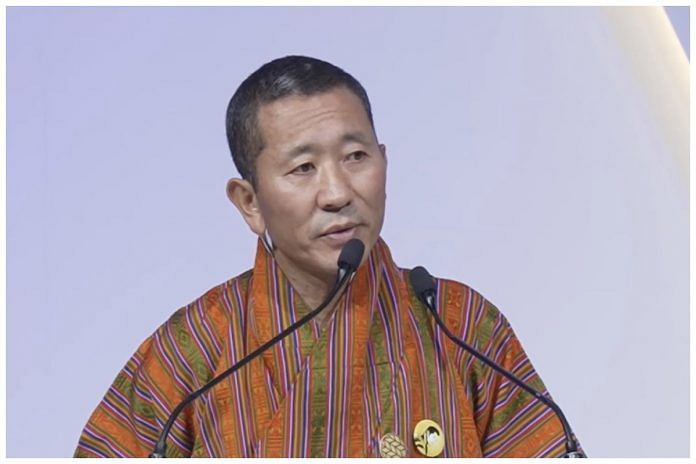New Delhi: More than two years after reports suggested that China was building villages inside Bhutan’s borders, the Himalayan kingdom’s Prime Minister has claimed that these purported settlements do not fall in Bhutanese territory. “We have said categorically that there are no intrusions,” Bhutan’s PM Lotay Tshering told Belgian daily La Libre.
However, according to Robert Barnett — a scholar of Tibetan history and affiliate at the Lau China Institute, Kings College London — the purported Chinese villages are located within Bhutan’s northern, western, and northeastern border regions.
On Twitter, Barnett explained that 3 of the villages are in the mid-sector of Bhutan’s northern border, 2 are in the northeastern region of Lhuentse, while the remaining 5 are in the western border areas.
These assessments are based on evaluations of international, Chinese, and Bhutanese maps, according to Barnett.
In his interview, Bhutanese PM Tshering also said that it is “not for Bhutan alone” to settle the Doklam issue that has remained a bone of contention between India and China.
Also Read: You can holiday in Bhutan again, but there’s a development fee of Rs 1,200/day
‘Bhutan ceding land to China’?
The declaration by PM Tshering comes a few months after Bhutanese and Chinese officials met in the southwestern city of Kunming in China to discuss a “three-step roadmap” to settle border disputes between the two countries.
After the meeting in January this year, China and Bhutan had declared in a joint statement that representatives of the two sides “had an in-depth exchange of views on implementing the MoU on the Three-Step Roadmap for Expediting the China-Bhutan Boundary Negotiations, and reached positive consensus”.
“The two sides agreed to simultaneously push forward the implementation of all the steps of the three-step roadmap. The two sides also agreed to increase the frequency of the expert group meetings and to keep contact through diplomatic channels on holding the 25th round of China-Bhutan boundary talks as soon as possible at mutually convenient dates,” the joint statement had added.
Prior to this declaration by Bhutan’s PM, there was no official mention by authorities in Thimphu of these purported Chinese villages in Bhutanese territory, Barnett says. Further, Tshering also told La Libre that Bhutan’s border issues with China will be settled in a few more meetings.
Given this chain of events, Barnett says it “suggests either long-standing Bhutanese, Chinese and international maps of the border have all been wrong — or it could mean that Bhutan has agreed to cede these areas to China”.
For India, this poses complications since Doklam — where Indian and Chinese troops engaged in a stand-off in 2017 — lies in Bhutan’s western border region. Doklam overlooks parts of India.
Further, Bhutan is bound by treaty agreements to respect India’s security concerns.
De-hyphenating Doklam from the equation, PM Tshering told the Belgian daily, “Doklam is at the trijunction between India, China and Bhutan. It is not for Bhutan alone to settle the problem. We are three.”
Writing for Foreign Policy in May 2021, Barnett had argued that China’s intrusions in Bhutan are linked to India. “China doesn’t need the land it is settling in Bhutan: Its aim is to force the Bhutanese government to cede territory that China wants elsewhere in Bhutan to give Beijing a military advantage in its struggle with New Delhi,” he wrote.
(Edited by Amrtansh Arora)
Also Read: Jolted by Lanka, Pakistan, Bangladesh, Bhutan ‘taking steps to strengthen economy’, says FM Dorji



